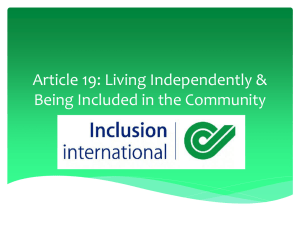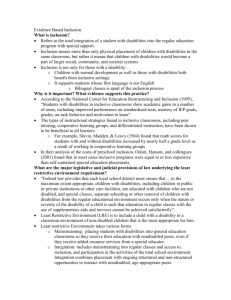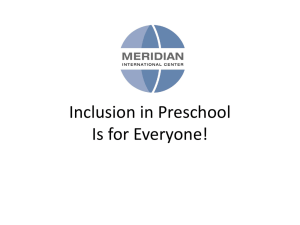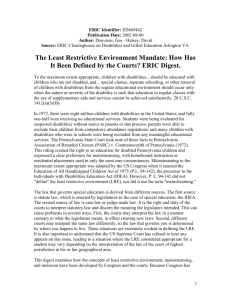Running Head: Mainstreaming Students with Disabilities
advertisement
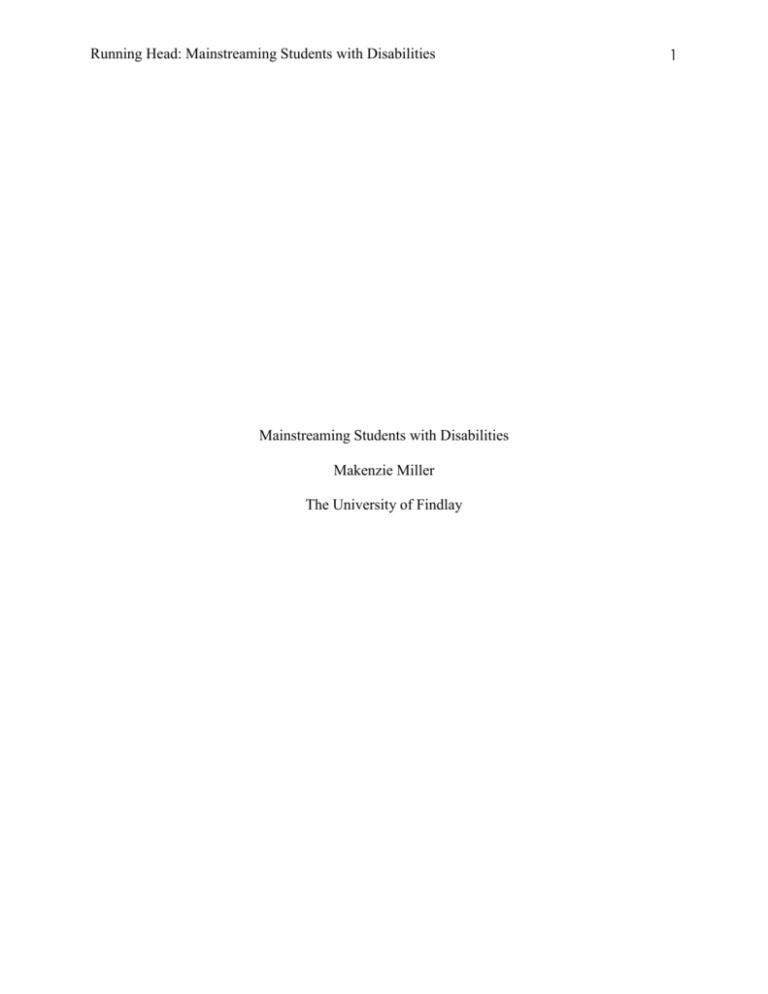
Running Head: Mainstreaming Students with Disabilities Mainstreaming Students with Disabilities Makenzie Miller The University of Findlay 1 Running Head: Mainstreaming Students with Disabilities 2 Carol Buchner said, “They may forget what you said but they will never forget how you made them feel.” To become a teacher is a difficult thing to do. To become a teacher you have to be very dedicated and very kind hearted. Not all students learn the same way so; you must be able to accommodate different students’ needs. As a teacher you must be able to indicate the students least restrictive environment (LRE). LRE is where a student best fits in the school. Do they need to be in a regular education classroom (full inclusion), a resource classroom (special education classroom), an inclusive classroom, or do they need to go to a school that focuses on their exact needs? Mainstreaming is used to place students with disabilities in one or more “regular” education classes. The next way is inclusion, which is when, as a teacher you bring services to the child rather than the child moving to the services. Last there is full inclusion. Full Inclusion means that students will be in a regular education classroom full time. There have been a lot of questions about mainstreaming students with disabilities. “Does it work?” “Is it bad for the regular education students?” The answer to those questions depends on whom you ask. Does mainstreaming a student with disabilities work? Review of the Literature Litvack article has to do with Kirlick and Kirlick and their studies of grouping and how effective it is to group a child with disabilities with children who have no disability. One of their major discoveries was that curricular adaptations occurred within different kinds of grouping as apposed to the grouping itself. They discuss how self-esteem in gifted children is enhanced when separation from other children occurs. The separation allows more focus and attention to the student and their ability to learn. Kirlick and Kirlick went through hundreds of articles examining any documented child grouping. Many of the articles explained that the relations between the gifted children and the not gifted children which were described as the children with Running Head: Mainstreaming Students with Disabilities 3 disabilities differed. The one main problem they ran into with their research was the fact that some of the researchers did not have a controlled group. Due to this many of the studies could not draw an accurate conclusion with the studies. Part of the research that was done was the views of what the teachers thought and what the students and parents had to say about using inclusion. Nearly all teachers that were interviewed supported inclusion in the classroom, and the teachers who did not support it were only concerned of not having enough recourses in the classroom to accommodate to students with a disability. Parents with children who have a disability agree with most of the teachers. They believe that inclusion is a good idea to help children learn and preparing them for the real world. Parents main concern is that inclusion with inhibit social isolation with their child and other children with or without disabilities. Studies with asking students have hardly been done. The few that were the students had a learning disability and found it very helpful with the separate help from another faculty member or staff. Words that were repeated were “helpful, friendship, prepared.” Running Head: Mainstreaming Students with Disabilities LITVACK, M. S., RITCHIE, K. C., & SHORE, B. M. (2011). High- and Average-Achieving Students' Perceptions of Disabilities and of Students With Disabilities in Inclusive Classrooms. Exceptional Children, 77(4), 474-487. 4

